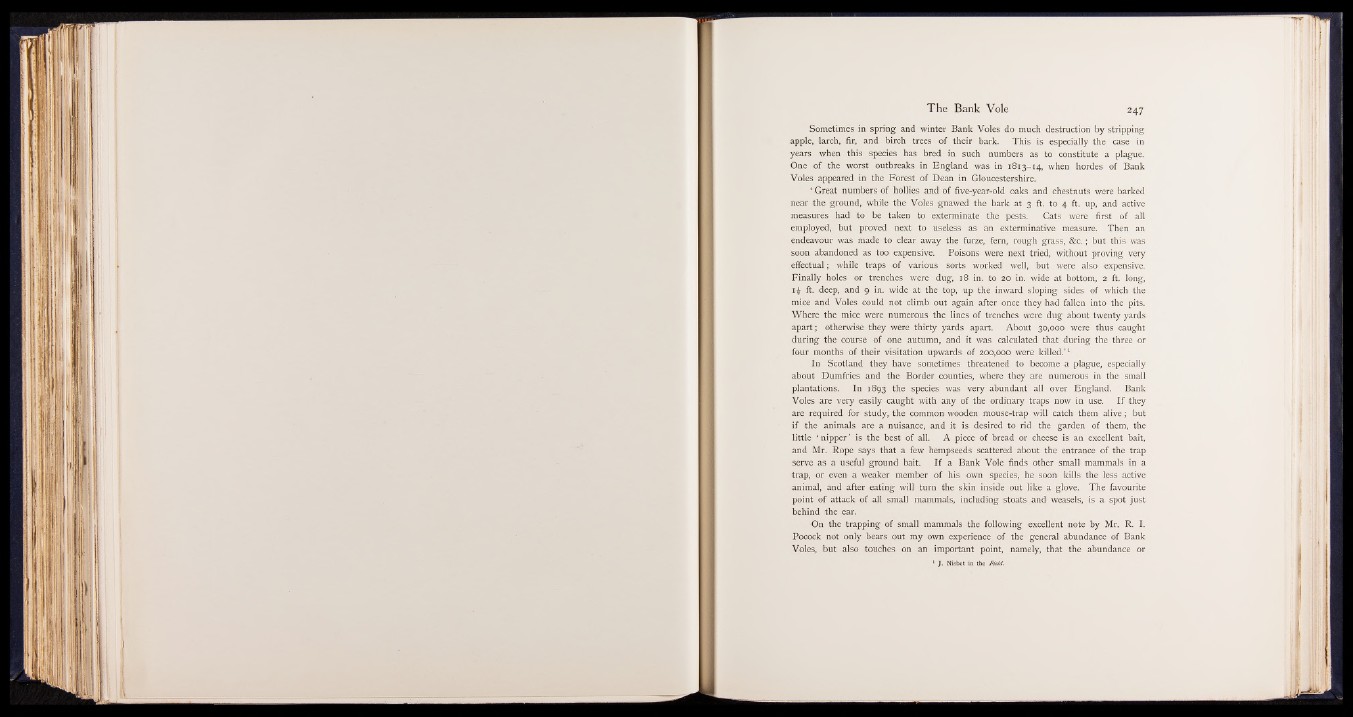
The Bank Vole 247
Sometimes in spring and winter Bank Voles do much destruction by stripping
apple, larch, fir, and birch trees of their bark. This is especially the case in
years when this species has bred in such numbers as to constitute a plague.
One of the worst outbreaks in England was in 18 13 - 14 , when hordes of Bank
Voles appeared in the Forest of Dean in Gloucestershire.
‘ Great numbers of hollies and of five-year-old oaks and chestnuts were barked
near the ground, while the Voles gnawed the bark at 3 ft. to 4 ft. up, and active
measures had to be taken to exterminate the pests. Cats were first of all
employed, but proved next to useless as an exterminative measure. Then an
endeavour was made to clear away the furze, fern, rough grass, & c .; but this was
soon abandoned as too expensive. Poisons were next tried, without proving very
effectual; while traps of various sorts worked well, but were also expensive.
Finally holes or trenches were dug, 18 in. to 20 in. wide at bottom, 2 ft. long,
i£ ft. deep, and 9 in. wide at the top, up the inward sloping sides of which the
mice and Voles could not climb out again after once they had fallen into the pits.
Where the mice were numerous the lines of trenches were dug about twenty yards
apart; otherwise they were thirty yards apart. About 30,000 were thus caught
during the course of one autumn, and it was calculated that during the three or
four months of their visitation upwards of 200,000 were killed.’ 1
In Scotland they have sometimes threatened to become a plague, especially
about Dumfries and the Border counties, where they are numerous in the small
plantations. In 1893 the species was very abundant all over England. Bank
Voles are very easily caught with any of the ordinary traps now in use. I f they
are required for study, the common wooden mouse-trap will catch them alive; but
if the animals are a nuisance, and it is desired to rid the garden of them, the
little ‘ nipper ’ is the best of all. A piece of bread or cheese is an excellent bait,
and Mr. Rope says that a few hempseeds scattered about the entrance of the trap
serve as a useful ground bait. I f a Bank Vole finds other small mammals in a
trap, or even a weaker member of his own species, he soon kills the less active
animal, and after eating will turn the skin inside out like a glove. The favourite
point of attack of all small mammals, including stoats and weasels, is a spot just
behind the ear.
On the trapping of small mammals the following excellent note by Mr. R. I.
Pocock not only bears out my own experience of the general abundance of Bank
Voles, but also touches on an important point, namely, that the abundance or
1 J. Nisbet in the Field.